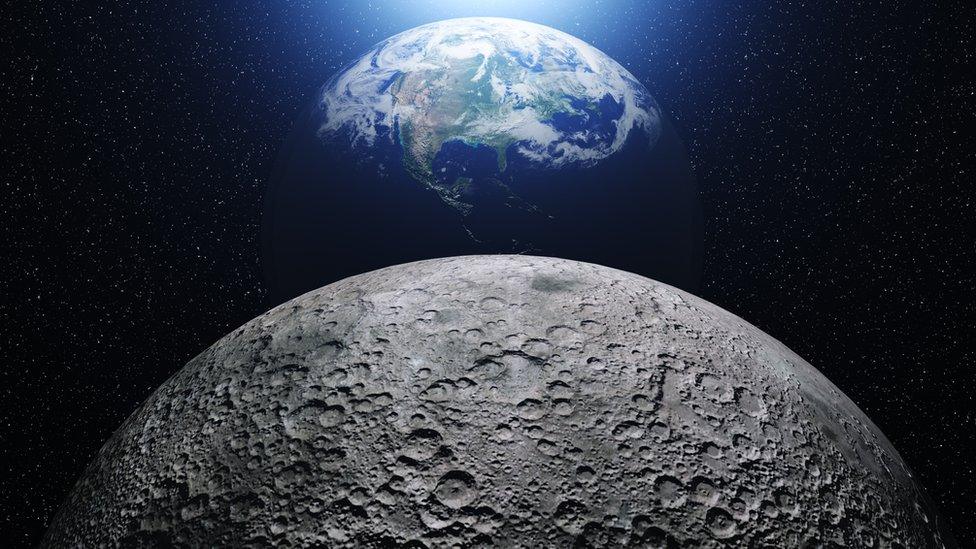Moon landing conspiracy theories aren't true - here's how we know
- Published
- comments
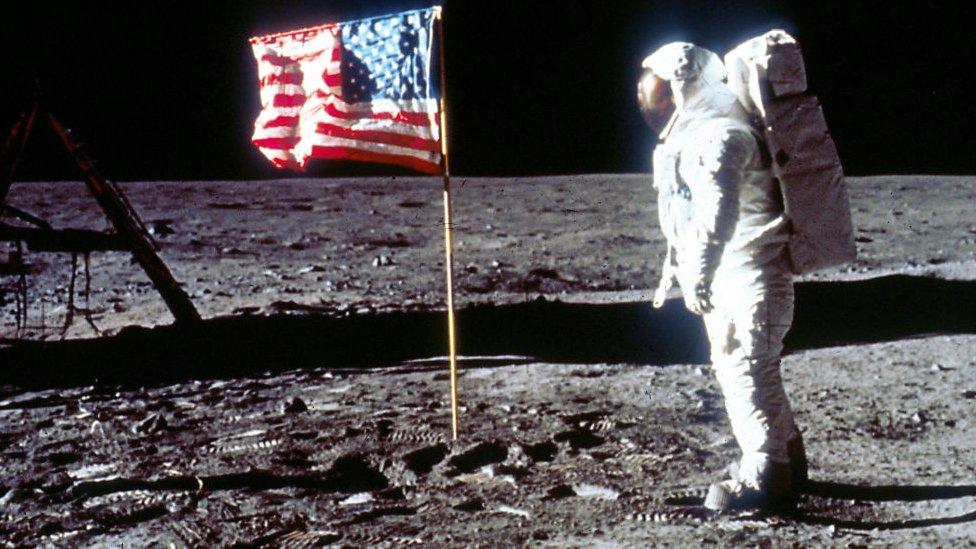
On the 20 July 1969, Commander Neil Armstrong and lunar module pilot Buzz Aldrin - both American - landed the Apollo Lunar Module Eagle on the Moon.
A few hours later, Neil Armstrong became the first man to walk on the Moon. Around 650 million people watched the moment on television.
It was one of the most important moments in history.
Even though there's lots of proof that the Moon landing happened, some people don't believe it.
People who suggest the Moon landing didn't happen are often called conspiracy theorists because they believe it was a hoax set up by Nasa.
Scientists and experts like those from Nasa often have to provide facts to disprove conspiracy theorists who say the Moon landing didn't happen.
Here, we take a look at some of the reasons that people say the landing didn't happen - and why they are wrong.
No stars
Some conspiracy theorists reference the lack of stars in the pictures taken by the Apollo astronauts from the surface of the Moon.
WATCH: The biggest moments of Nasa astronauts exploring space
There is no air which means the sky is black, but some people say it is strange that there are no stars.
The simple answer is for this is that the stars are there, but just that they are too faint to see.
When you take a photo, you have to decide what you want to focus on, so it makes sense that it would be the astronauts the camera would focus on - not the stars.
The flapping flag
Another claim is that the famous US flag, which appears in photos of the moment, appears to be flapping in the wind.
Doubters say there wouldn't be wind on the Moon as there is no air.
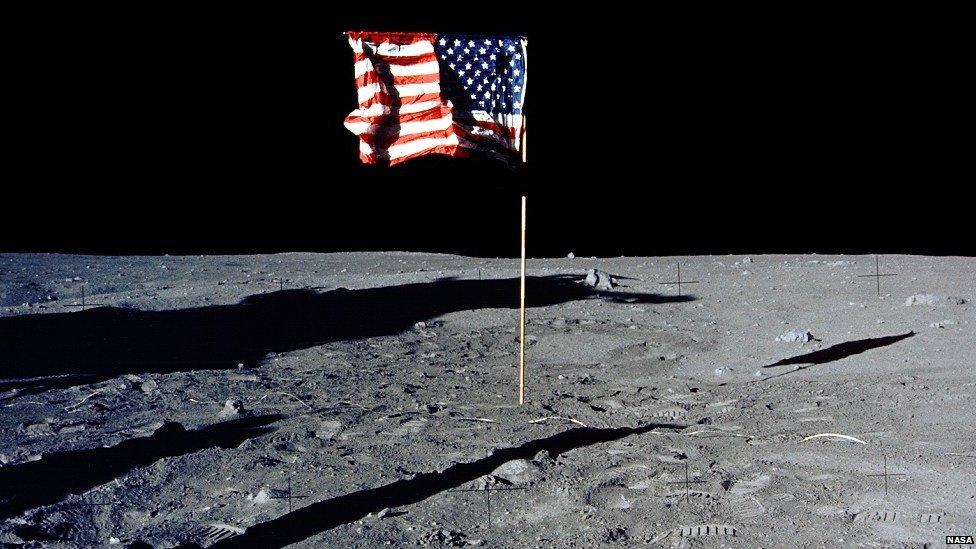
The truth to this is that although it looks like it is moving, it isn't. When it was stuck in the ground it would have been disturbed and kept that bent shape.
In videos, it also appears to wave back and forth. This is because when the astronauts were putting it in, they rotated it back and forth to better dig into the lunar soil, which made the flag ripple.
It wasn't impossible
Some people don't believe in the space shuttle and the missions to the Moon because they think the journey itself was impossible because of something called the Van Allen belts.
The Van Allen belts are huge belts of radiation that surround the Earth. It's been claimed that humans would not be able to pass through these belts without being subjected to lethal doses of radiation.
Radiation sickness occurs when you have been exposed to around 200 to 1000 'rads' of radiation within a few hours.
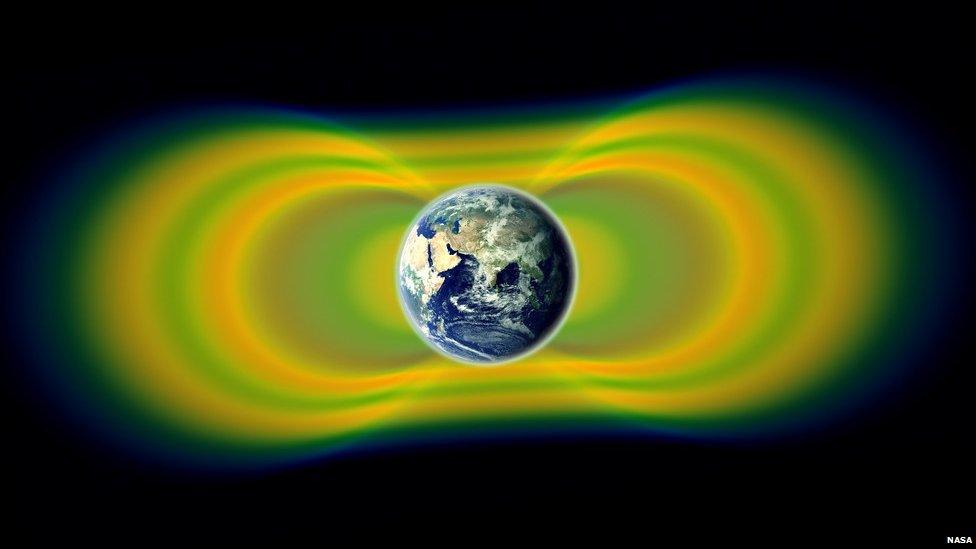
Two giant swaths of radiation, known as the Van Allen Belts, surrounding Earth were discovered in 1958. In 2012, a third belt was found
The Apollo 11 crew were within the belts for less than two hours during their journey to the Moon, and so would have only been exposed to an estimated 18 rads - well within the safe limit.
Nasa made sure that the spacecraft was well-insulated so actually the average dose of radiation over the 12-day mission was just 0.18 rads - similar to a chest X-ray.
Moon rocks
Another piece of evidence for the landing is the fact that the astronauts came back with rocks from its surface.
They returned with more than 842 pounds (382kg) of Moon rocks, which have been shared and studied by scientists in many countries for decades.
All of the tests have confirmed that they did indeed come from the Moon.
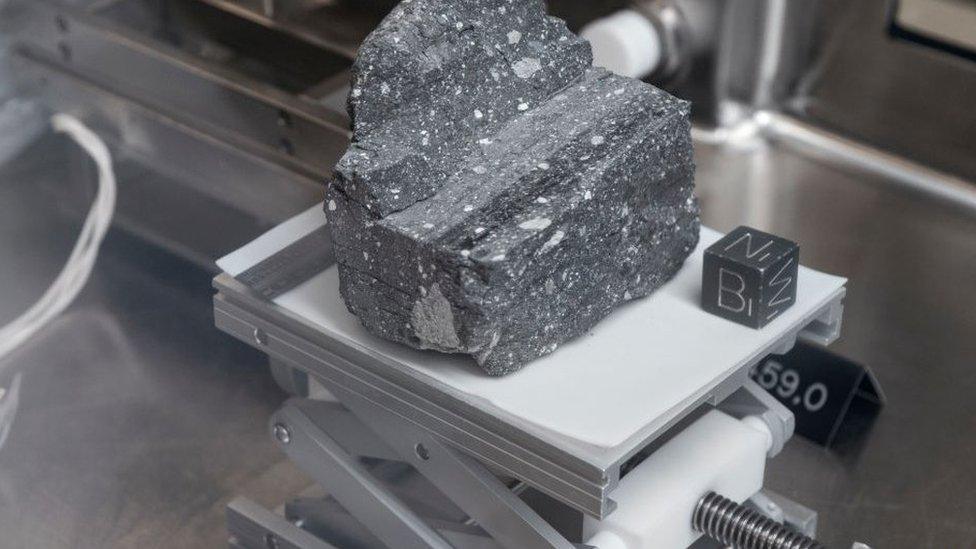
Nasa's Johnson Space Center has a significant collection of lunar material
Many of the Moon rocks contained small glass spheres or spherules. Glass is produced in two ways - in explosive volcanic activity and by high-speed meteorite impacts that melt and vaporize rock.
In both methods, the rock needs time to cool and crystallise slowly.
On Earth, the elements quickly break down any volcanically-produced glass. But in space, glass spherules survive nearly pristine.
Footprints on the Moon
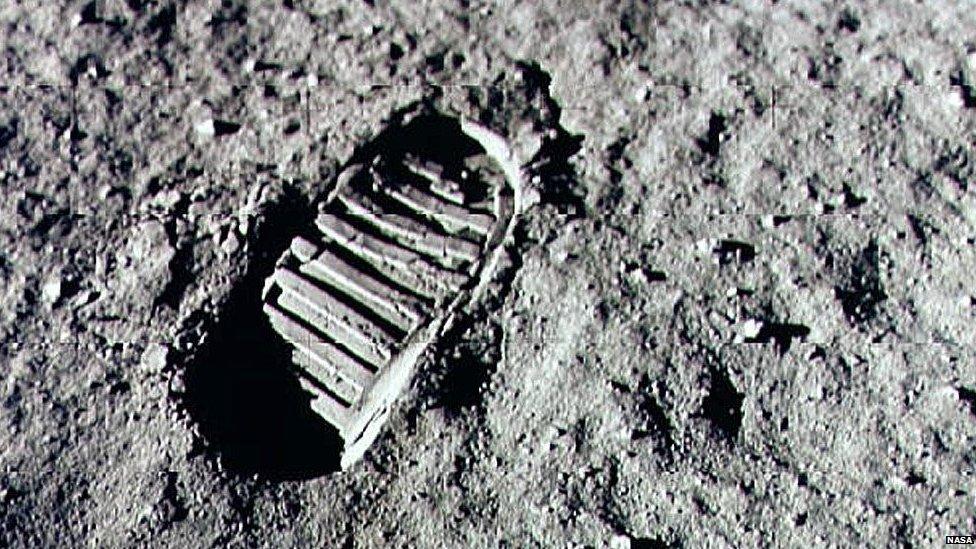
You can still see where the different Apollo missions landed and even the footprints of the astronauts from space.
On Earth, footprints or other markings on the surface are easily erased by the winds, rain and other surface activity which happens on a planet with an atmosphere, oceans and life. On the Moon, however, there are none of those conditions, which is why the footprints remain.
Nasa's Lunar Reconnaissance Orbiter, which has been in orbit around the Moon since 2009, has captured photographs of all the Apollo landing sites.
The images show the Apollo spacecraft in exactly the right locations and, amazingly, you can even see the astronauts' footprints as they explored their lunar home.
These landing sites have also been independently spotted by a variety of other spacecraft from China, India, and Japan.
Equipment left behind on the Moon
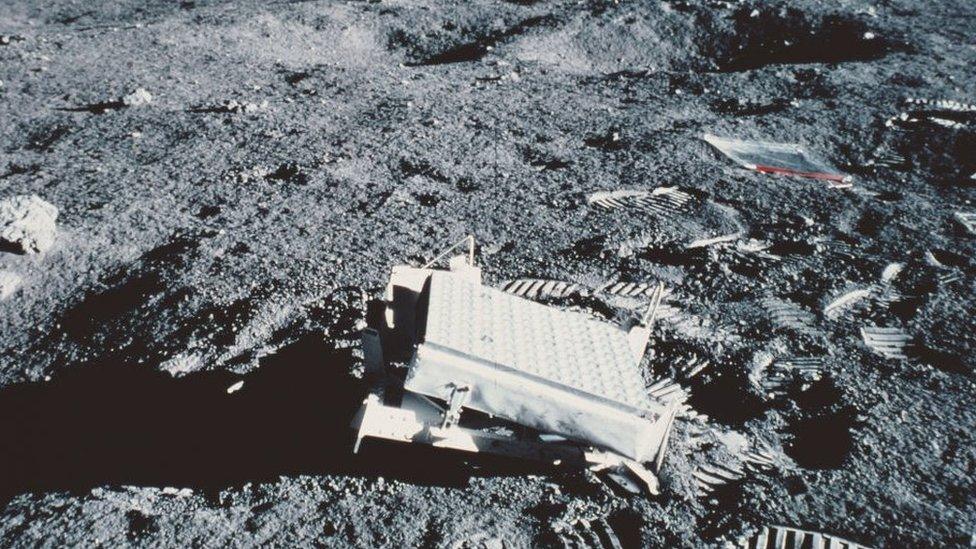
The Moon landing was not just for entertainment - even if hundreds of millions of people did watch it. It was also a huge opportunity for science.
A number of scientific instruments were sent up with the mission to learn more about the Moon and some of these were left behind.
Amongst the instruments left were retroreflectors. Lunar reflectors have enabled precise measurements of the Earth-Moon distance since 1969 and many remain operational today, reflecting lasers off surfaces installed by the Apollo 11, 14, and 15 crews, as well as the Soviet Lunokhod 2 rover.
Another experiment is the LSM - or lunar surface magnetometer - which was designed to measure the Moon's magnetic field. It determined that the Moon does in fact have magnetized features on the surface, but that the magnetism is not the same all the way around.
The data from these experiments and others is still used today.
- Published16 July 2019
